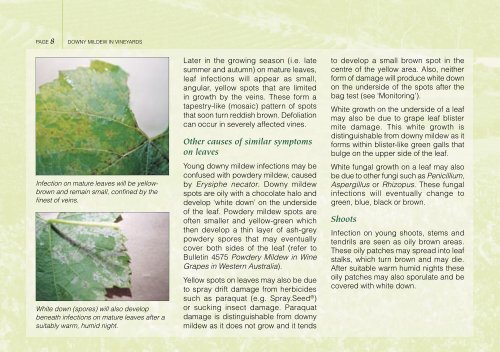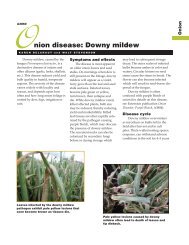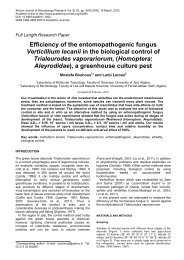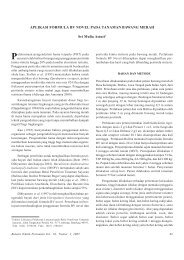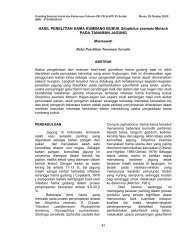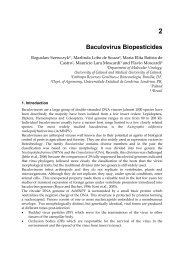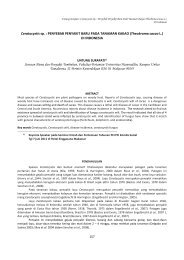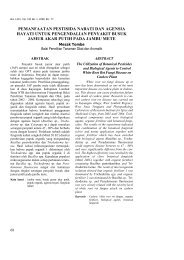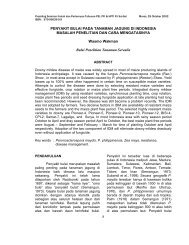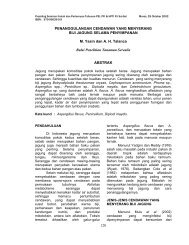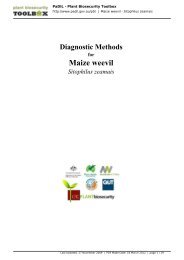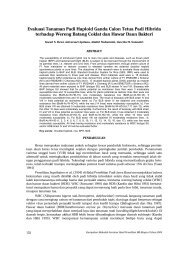Downy mildew in vineyards - Department of Agriculture and Food
Downy mildew in vineyards - Department of Agriculture and Food
Downy mildew in vineyards - Department of Agriculture and Food
You also want an ePaper? Increase the reach of your titles
YUMPU automatically turns print PDFs into web optimized ePapers that Google loves.
PAGE 8DOWNY MILDEW IN VINEYARDSInfection on mature leaves will be yellowbrown<strong>and</strong> rema<strong>in</strong> small, confi ned by thefi nest <strong>of</strong> ve<strong>in</strong>s.White down (spores) will also developbeneath <strong>in</strong>fections on mature leaves after asuitably warm, humid night.Later <strong>in</strong> the grow<strong>in</strong>g season (i.e. latesummer <strong>and</strong> autumn) on mature leaves,leaf <strong>in</strong>fections will appear as small,angular, yellow spots that are limited<strong>in</strong> growth by the ve<strong>in</strong>s. These form atapestry-like (mosaic) pattern <strong>of</strong> spotsthat soon turn reddish brown. Defoliationcan occur <strong>in</strong> severely affected v<strong>in</strong>es.Other causes <strong>of</strong> similar symptomson leavesYoung downy <strong>mildew</strong> <strong>in</strong>fections may beconfused with powdery <strong>mildew</strong>, causedby Erysiphe necator. <strong>Downy</strong> <strong>mildew</strong>spots are oily with a chocolate halo <strong>and</strong>develop ‘white down’ on the underside<strong>of</strong> the leaf. Powdery <strong>mildew</strong> spots are<strong>of</strong>ten smaller <strong>and</strong> yellow-green whichthen develop a th<strong>in</strong> layer <strong>of</strong> ash-greypowdery spores that may eventuallycover both sides <strong>of</strong> the leaf (refer toBullet<strong>in</strong> 4575 Powdery Mildew <strong>in</strong> W<strong>in</strong>eGrapes <strong>in</strong> Western Australia).Yellow spots on leaves may also be dueto spray drift damage from herbicidessuch as paraquat (e.g. Spray.Seed ® )or suck<strong>in</strong>g <strong>in</strong>sect damage. Paraquatdamage is dist<strong>in</strong>guishable from downy<strong>mildew</strong> as it does not grow <strong>and</strong> it tendsto develop a small brown spot <strong>in</strong> thecentre <strong>of</strong> the yellow area. Also, neitherform <strong>of</strong> damage will produce white downon the underside <strong>of</strong> the spots after thebag test (see ‘Monitor<strong>in</strong>g’).White growth on the underside <strong>of</strong> a leafmay also be due to grape leaf blistermite damage. This white growth isdist<strong>in</strong>guishable from downy <strong>mildew</strong> as itforms with<strong>in</strong> blister-like green galls thatbulge on the upper side <strong>of</strong> the leaf.White fungal growth on a leaf may alsobe due to other fungi such as Penicillium,Aspergillus or Rhizopus. These fungal<strong>in</strong>fections will eventually change togreen, blue, black or brown.ShootsInfection on young shoots, stems <strong>and</strong>tendrils are seen as oily brown areas.These oily patches may spread <strong>in</strong>to leafstalks, which turn brown <strong>and</strong> may die.After suitable warm humid nights theseoily patches may also sporulate <strong>and</strong> becovered with white down.


